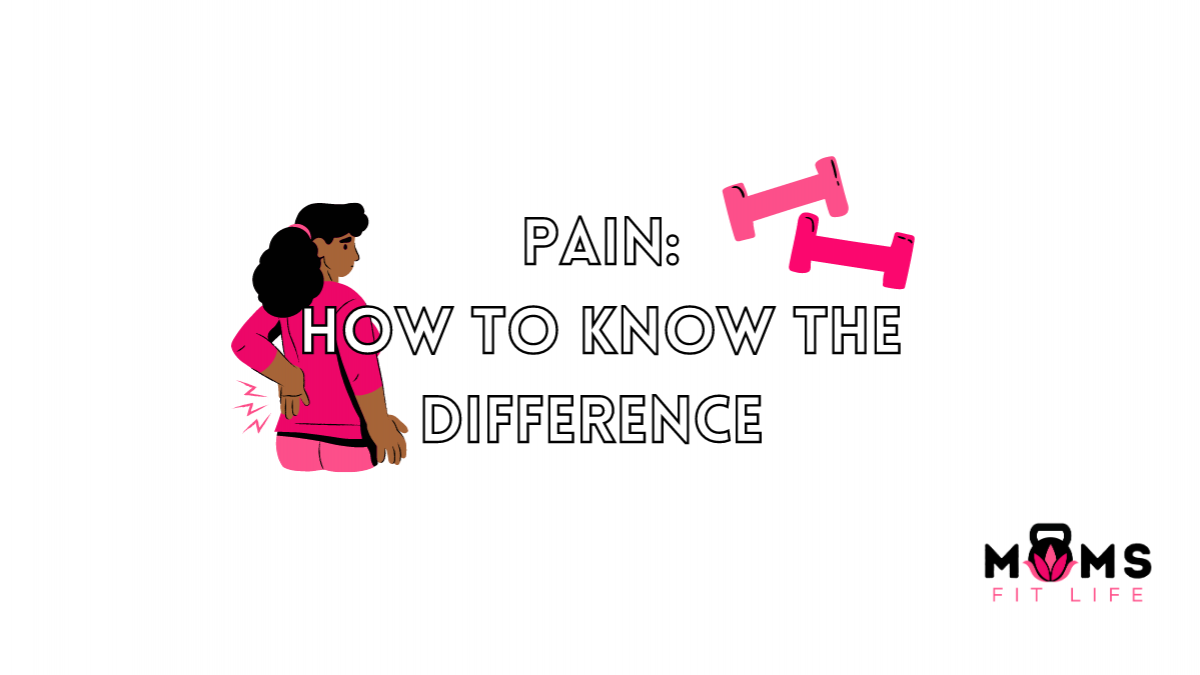Pain: What is too much and what is just right?

How to learn the difference between pain signals.
Often, tuning into our body can be a key to success or failure when it comes to lifting. Identifying what your body is telling you (good and bad) can be extremely helpful for overcoming challenges and excuses. It can also be a major player in avoiding/worsening injury. As a trainer, I find that women especially, don't know or haven't ever learned what types of "pains" can occur during workouts and what they mean.
Working out can hurt. Working out can cause pain. Movement can hurt. Movement can cause pain. However, is there such a thing as good pain that we should work through, or should it always mean it is time to stop?
Yes. There is a difference and it is important to learn it.
When it is GOOD pain:
It will feel like your muscles are tired. They may even burn while you lift. When you can battle the mental aspect, this kind of sensation will not affect your form. It will challenge it. It will force you to try harder to maintain it. When you are lifting and you feel these sensations, it will often stop burning as soon as (or shortly after you stop). The fatigue may last a while, but it will not be painful.
This can also lead to DOMS (Delayed Onset Muscle Soreness). Which may start 24-48 (this varies per person) hours after a workout. It can be pretty rough to sit, stand or move when this occurs, but as long as it is in muscles you used during your workout, chances are it is okay. Ideally, this should only last a day or two, and walking or light movement helps speed up recovery. As you become more accustomed to workouts, this will lessen and may only occur on a rare occasion.
When it is BAD pain:
During a workout, if you feel a sudden sharp pain (vs. the gradual build to burning or fatigue), then this might be a sign something is not good. This may also lead to long-term pain that does not go away after a few days or may even get worse.
If you experience things like numbness, tingling, or sharp shooting pain, it could indicate issues with the nerves. This may be fixable with form adjustment or movement changes that lead to long-lasting changes, but it could also be a sign of something more serious.
Joint pain is also similar. If you are feeling pain in your joints (for example knees), then continuing to lift may be making things worse. However, this can often be fixed with form correction, training the body for muscle imbalances, or backing off a bit. Overuse, incorrect form, and muscle imbalance are usually the cause of joint pains so they can be fixed. However, on occasion, it could be a sign of something more serious.
When it comes to workouts, it is super important to pay attention to your body, listen to the signals it's sending, and stop exercising if you experience any type of pain that feels unusual or concerning. Remember, good pain often involves muscle soreness and fatigue. This kind of discomfort is part of the process of improving your fitness and strength. On the other hand, bad pain involves sharp, acute pain, persistent pain, joint pain, and nerve-related pain. If you're uncertain, it's always a good idea to consult a medical professional or a qualified fitness trainer for guidance.
Live Life Confidently,
Jen
This blog is not intended to diagnose or treat an illness or injury. It is for educational purposes only. If you chose to try any of the exercises presented here you do so at your own risk. Please consult your physician before you start any new program. Not every exercise is safe for every person. Correct execution of all exercises is imperative to prevent injury. Please consult your healthcare professional if you have questions about exercise execution or if an exercise is right for you. You are responsible for yourself and will not hold Jen Landry or Moms Fit Life liable for any illness or injury.
 Jen Landry
Jen Landry 